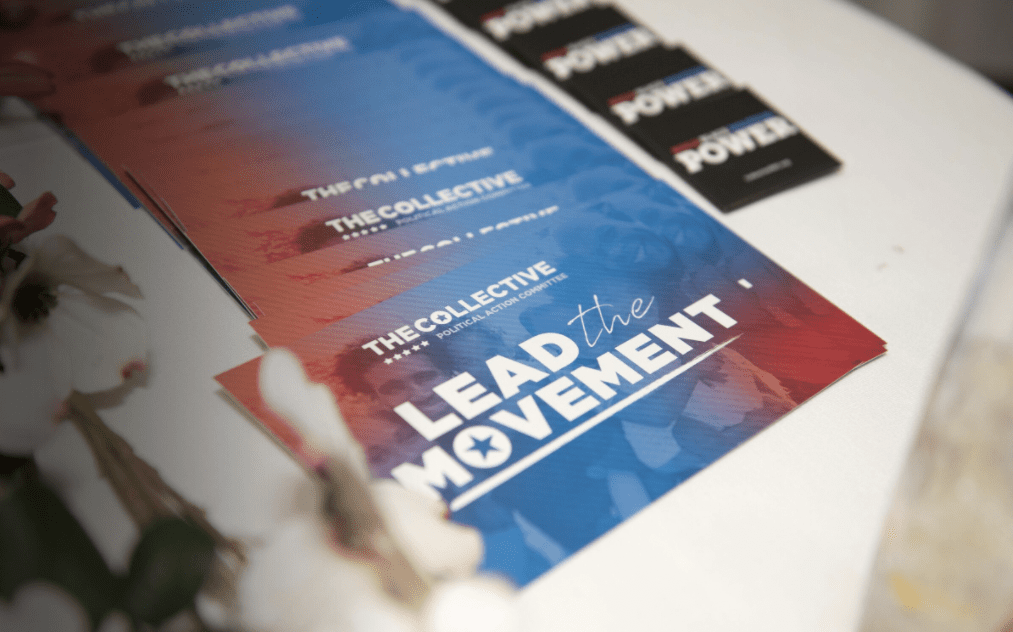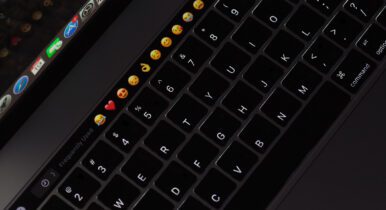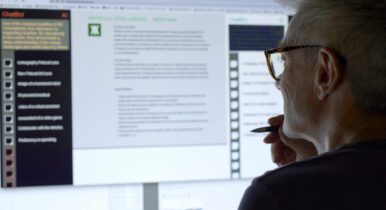Crafting the Right Creative for the Moment
The Collective PAC’s Creative Director Elijah Williamson spoke to C&E about branding and design + what’s working to generate engagement online.

Image Credit: The Collective PAC
A student of the Harlem Renaissance, Elijah Williamson envisioned ending up in New York City. But after training at the Corcoran School of the Arts & Design at the George Washington University, doors started opening in DC.
The South Carolina native, who completed his associate degree at the Delaware College of Art and Design, is now creative director for The Collective PAC, where he helps elect African-American candidates up and down the ballot.
C&E: How do you tailor your creative to a specific contest?
Williamson: Right now, it has a lot to do with the landscape. With candidates such as [Kentucky Senate candidate] Charles Booker, we did do a lot of messaging with him in the last cycle. But this cycle, it’s a completely different landscape so we’re reevaluating how it is that we really get in front of his [voters]. But also making sure that our audience knows that the candidates we support are the candidates that are for their interests.
My job as creative director is to take the messaging that we’re trying to put forth at the current moment in the political landscape, and put that into something that is visually and audibly tangible, and also eye catching or ear catching to our audiences so that they know we are here for them, that we are representing their particular voice.
C&E: How would you describe the aesthetic of The Collective PAC?
Williamson: We’ve embraced a shift to a more minimalistic approach in making sure that the faces and names of these candidates are paramount. We want our voters to know who these people are. Gradients and patterns are things that we have used, but really, a minimalistic approach and honing into what is important for the information to be passed on is what we’ve been focused on lately.
C&E: Where do you draw inspiration from?
Williamson: I draw a lot of inspiration from Carrie Mae Weems, Gordon Parks, Emory Douglas, movements from the Harlem Renaissance, Black Panther Party — those are personal favorites of mine. I don’t want to sit here and say all those levels of communication translate into today’s level of politics. But I do believe that there was a certain resilience and a certain bravery that came with their level of communication and graphic design that I do hope to invoke when creating artwork for today’s audiences and today’s voters. I can only hope to be as influential.
C&E: What formats are working to reach your audience?
Williamson: We do know that video hits home a lot harder and a lot faster than graphics. What our graphics do is provide a very concrete level of messaging — like this is everything on one page that we want to share so if this is a candidate or idea that resonates with you, take this and share it with your audience or your friend group even.
But with video, we do find that it is a lot more influential in getting a whole lot of messaging into one piece. I think our last piece on the insurrection was definitely a testament to that. We were able to show a perspective, from our lens specifically, [about] what is important to us and what really pulls on those heartstrings. We’re really proud of that.
I’ve been happy with the engagement we’ve been getting with our new endorsement graphics, and also with history graphics, like the Montgomery bus boycott. We also use different images from parts of history that are not necessarily seen every day, like an image we have for Jesse Jackson. We also use ones from new icons like Brita Filter, who was featured on ‘RuPaul’s Drag Race.’ There are all different ways that we can find voices that resonate with our voters that are not necessarily your everyday political voices.
C&E: What channel has been effective for the PAC online?
Williamson: We do have a big focus on Instagram and Twitter. But we also have been looking towards TikTok because that’s been a really big phenomenon of late. Facebook is still something that connects all of us inter-generation wise, so I do believe there is value in that. We’ve been trying to think of different ways to incorporate all of these platforms so that we’re not just thinking of one audience.
C&E: What advice would you give to campaigns and groups trying to reach an African-American audience?
Williamson: Stay true to yourself and don’t think too far ahead. Stay in the moment, stay in whatever it is you’re trying to say right now. Like James Baldwin said, ‘If I do my job right, when I’m gone, I’ll still be here.’ If you stay in the moment, if you focus on what is important to you right now, that work is always influential. If you do it right right now, it will last a long time. I can only hope to have the same testament when I’m gone.



